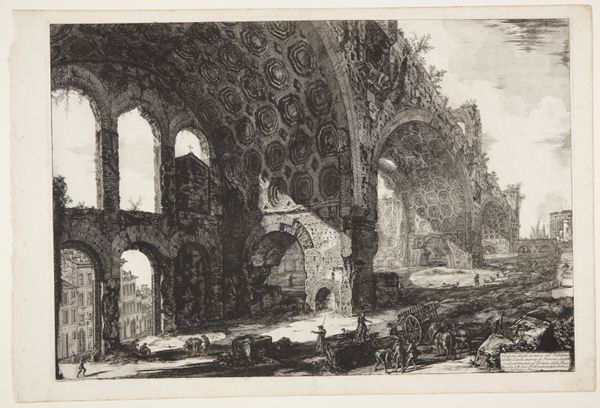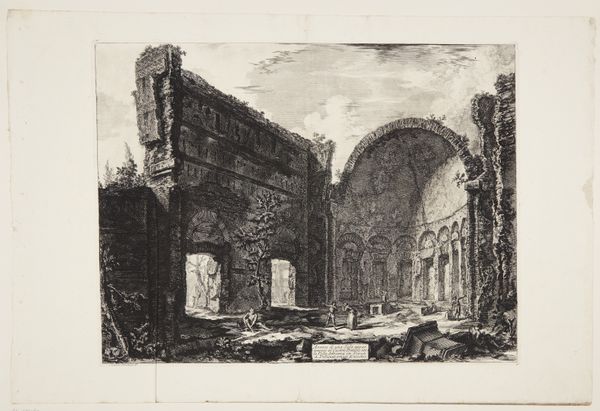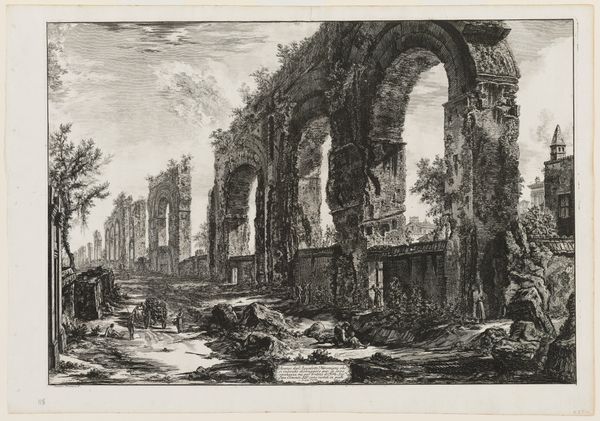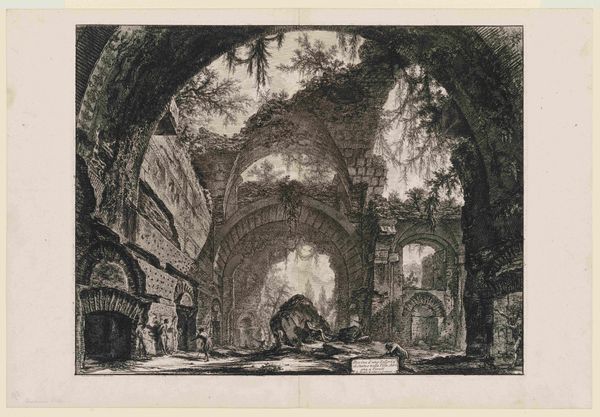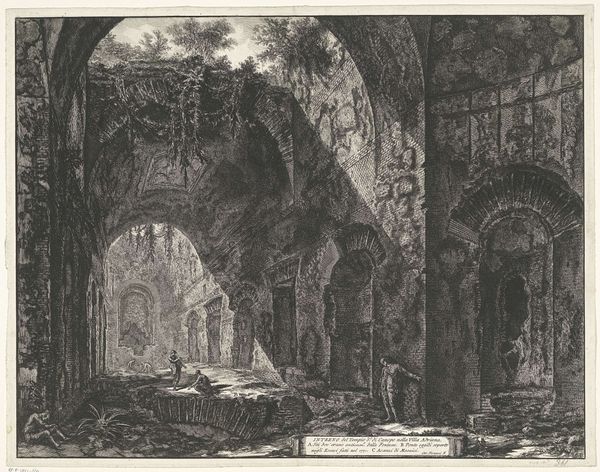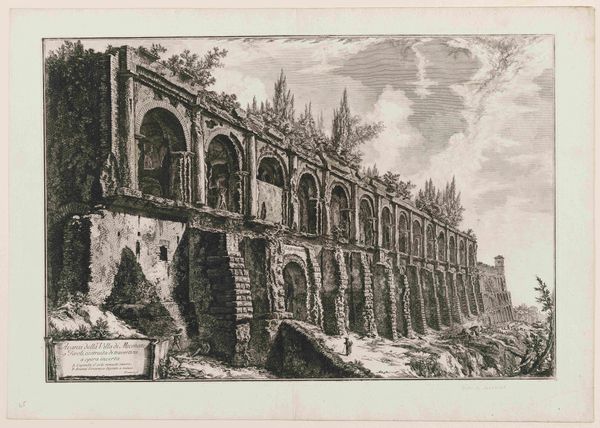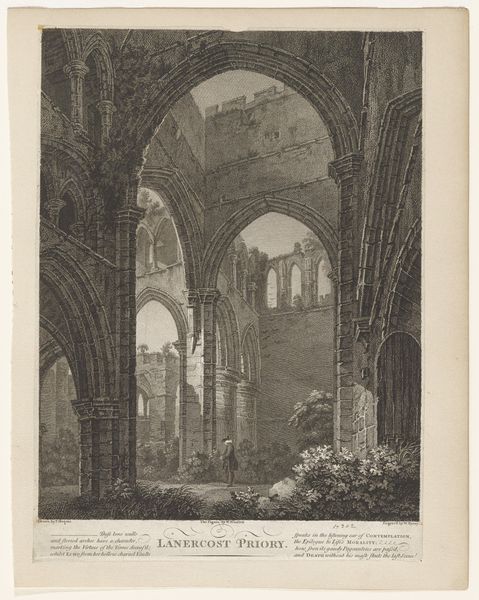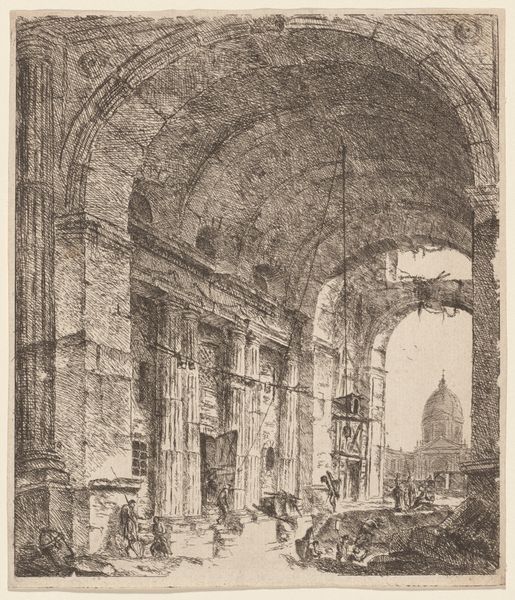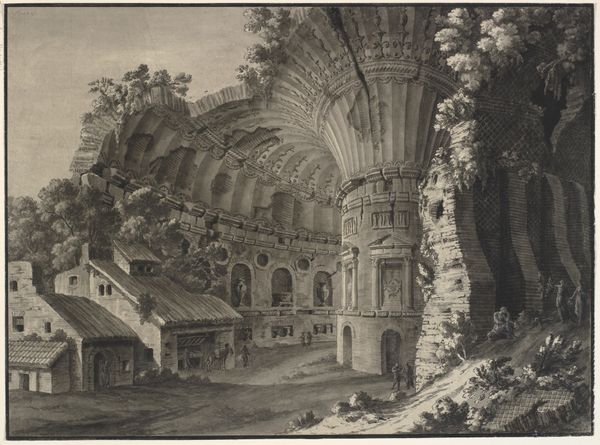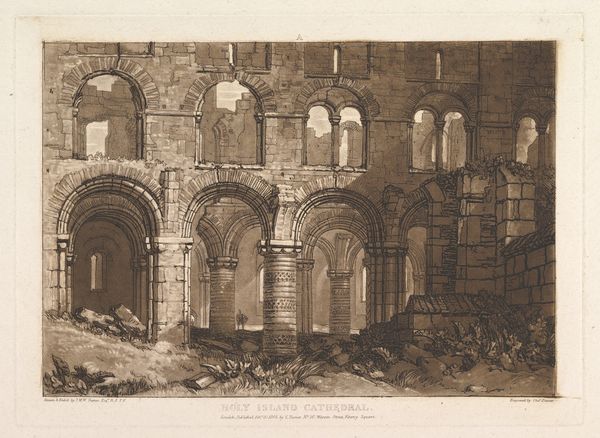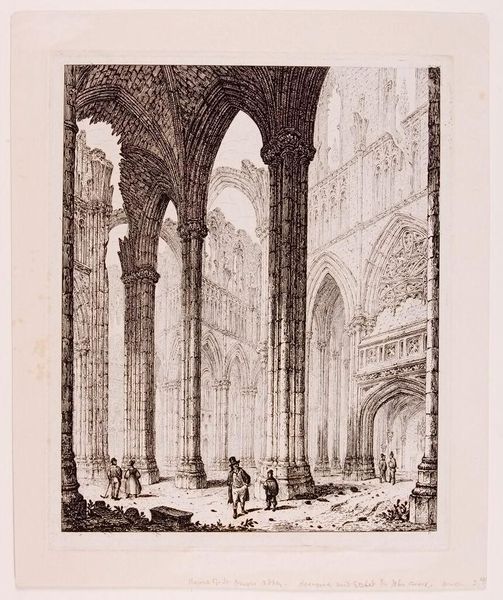
View of the Remains of the Dining Room of Nero's Golden House c. 1756 - 1778
0:00
0:00
print, etching, architecture
# print
#
etching
#
landscape
#
romanesque
#
ancient-mediterranean
#
history-painting
#
italy
#
architecture
Dimensions: 19 5/16 x 28 1/8 in. (49.05 x 71.44 cm) (plate)21 7/16 x 30 3/4 in. (54.45 x 78.11 cm) (sheet)
Copyright: Public Domain
Giovanni Battista Piranesi created this etching, "View of the Remains of the Dining Room of Nero's Golden House," using black ink on paper. The scene overwhelms with its cavernous interior space and detailed rendering of decay. Look at how Piranesi uses the contrast between light and shadow to direct our gaze, creating a dramatic and theatrical space. The elaborate coffered ceiling, though partially ruined, still conveys the opulence of Nero's palace. The architectural forms—arches, vaults, and crumbling walls—evoke a sense of the sublime, reflecting the 18th-century fascination with ruins and the passage of time. Piranesi's use of perspective, combined with the intricate detail, encourages reflection on themes of power, impermanence, and the relationship between past and present. Through this formal arrangement, Piranesi destabilizes traditional notions of architectural grandeur, suggesting a world where even the mightiest structures are subject to decay.
Comments
minneapolisinstituteofart almost 2 years ago
⋮
Today’s visitors to the Roman Forum can still see remnants of this looming edifice. Piranesi thought the space was the dining room of the fabled Golden House of Emperor Nero. But in fact it was the remains of a later project, an enormous basilica begun in 306 CE under Emperor Maxentius and completed under Constantine six years later. At the time, the basilica—a large public hall rather than a Christian church—was the largest building in Rome. Far in the distance, at the right, we can glimpse the Colosseum.
Join the conversation
Join millions of artists and users on Artera today and experience the ultimate creative platform.
